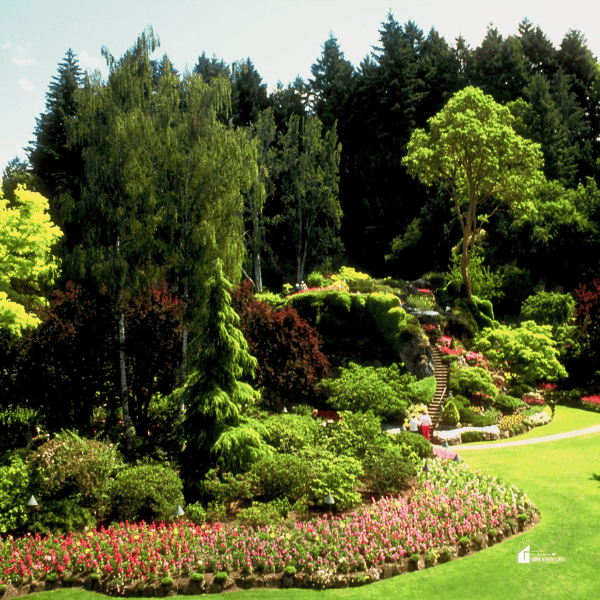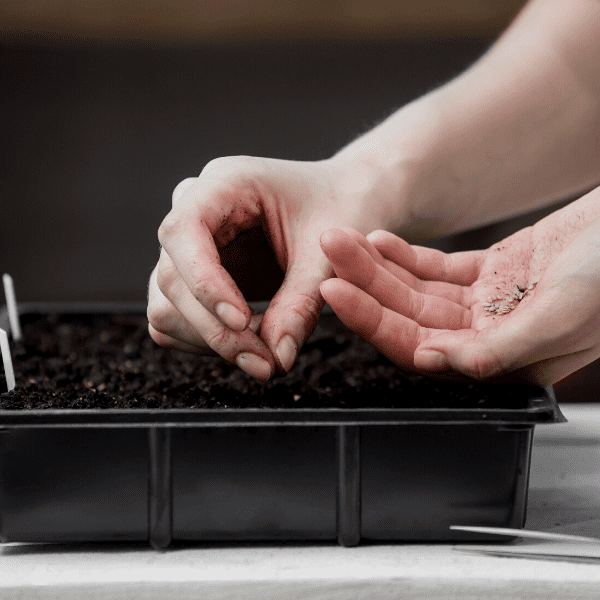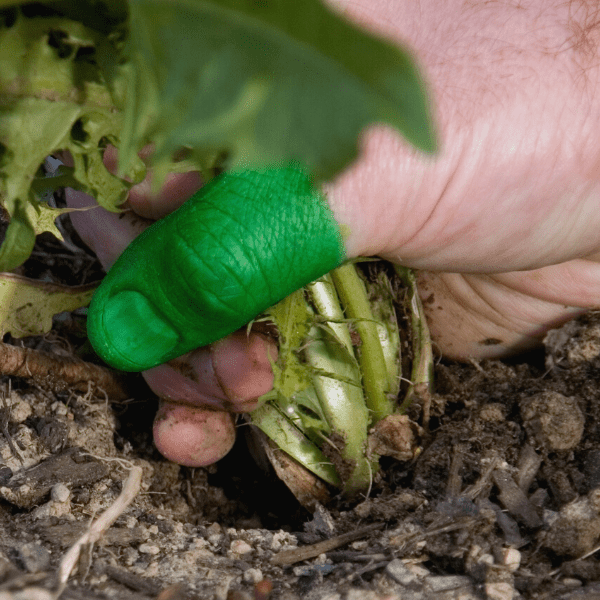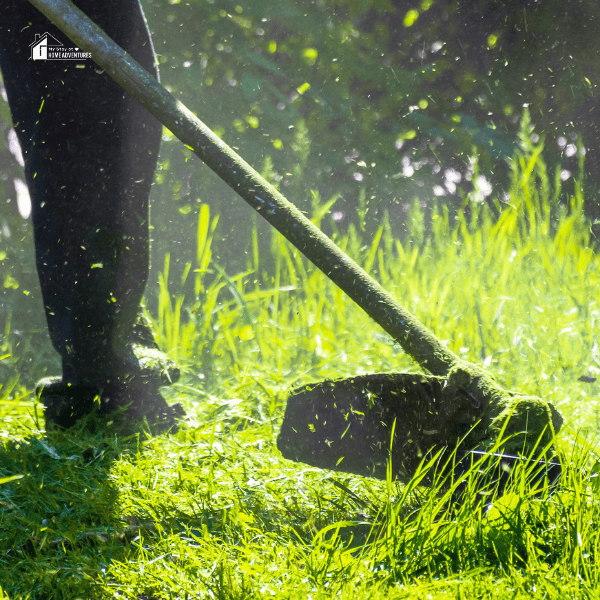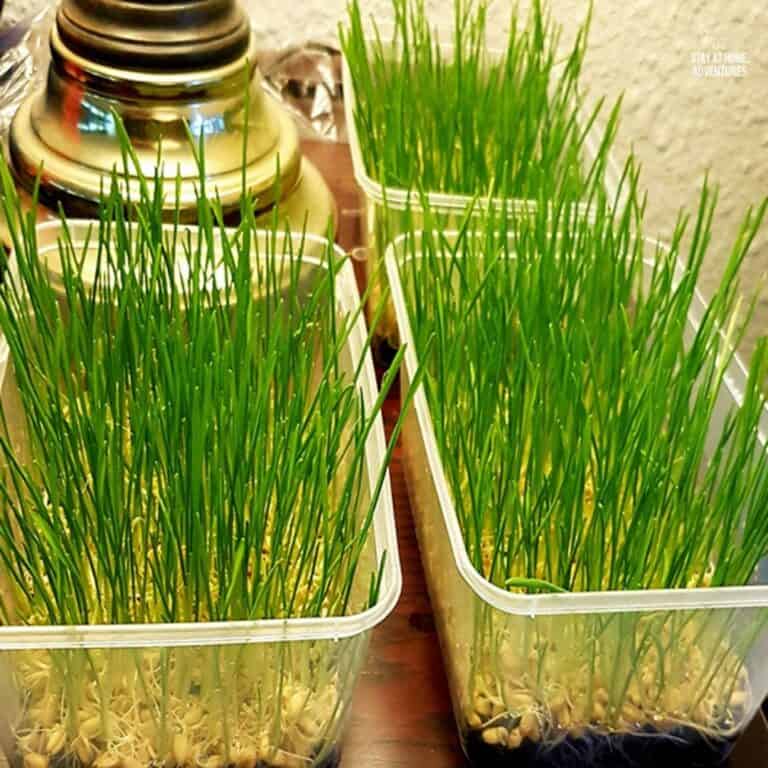What Kind Of Tree Is Good To Plant In Front Of A House?
This post may contain affiliate links which might earn us money. Please read my Disclosure and Privacy policies hereLooking for front yard tree ideas? Let's chat. When it comes to landscaping and adding curb appeal to your home, planting trees in the front yard can have a significant impact. Not only do they enhance the aesthetic appeal of your property, but they also provide several benefits that make them a worthwhile addition.
So let's answer the question, what kind of tree is good to plant in front of a house?
Several factors should be considered when choosing a tree to plant in front of the house. First and foremost, selecting a tree that enhances the aesthetic appeal and complements the house's overall design is important.
Also, the tree should be suitable for the climate and soil conditions in the area. It is beneficial to choose a tree that is not overly large or prone to excessive root growth, as this can cause damage to the foundation or underground utilities.
Furthermore, selecting a tree with attractive foliage, beautiful flowers, or colorful fruits can add vibrancy and visual interest to the front yard. Some popular choices for trees in front of the house include ornamental trees like dogwoods or flowering crabapples and evergreens like spruces or junipers that provide year-round greenery.
Ultimately, the choice of tree should be based on personal preference, maintenance requirements, and its ability to enhance the house's overall curb appeal.
Now that we have answered that question let's break this further.
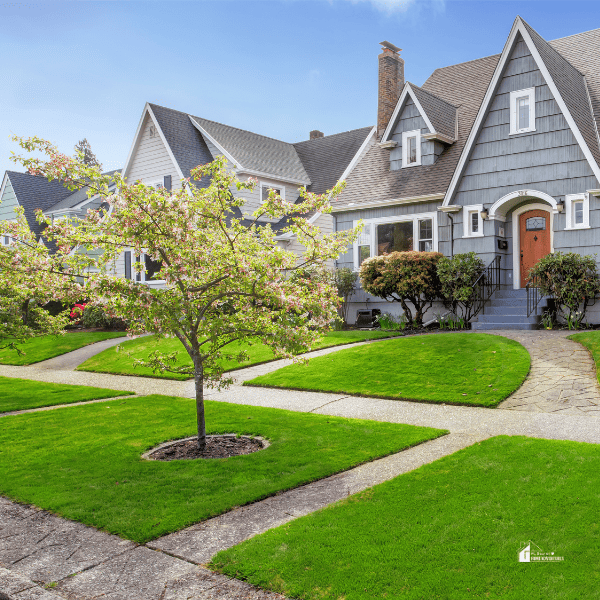
Importance of trees in front of the house
Trees play a vital role in creating a welcoming and inviting atmosphere around your home. They add a touch of nature and beauty, making your property stand out in the neighborhood. In addition to enhancing the visual appeal, trees contribute to the residents' overall well-being and health. They have a calming effect on our minds, reduce stress levels, and improve air quality by producing oxygen.
Benefits of planting trees in the front yard
There are several benefits to planting trees in the front yard of your house:
- Shade and temperature regulation: Trees provide natural shade, which can help keep your home cool during hot summer months. This can significantly reduce energy costs by minimizing the need for air conditioning.
- Privacy: Strategically placed trees can create a barrier between your home and the street or neighboring properties, providing you with privacy.
- Windbreak: Trees act as windbreakers, reducing wind speed and protecting your property from harsh winds during winter months.
- Increase property value: A well-maintained front yard with healthy and mature trees can increase the value of your property. Potential buyers often view tree-lined streets as more desirable.
- Wildlife habitat: Trees attract birds, butterflies, and other wildlife, creating a thriving ecosystem in your front yard.
When choosing a tree to plant in the front yard, consider factors such as mature height, growth rate, maintenance requirements, and suitability for your climate. Consulting with a local nursery or arborist can help you select the right tree to thrive in your area.
Maple Trees
Maple trees are popular for planting in front of houses due to their beauty and versatility. There are several types of maple trees to choose from, each with unique characteristics. Some popular options include Japanese maples, coral bark maples, sugar maples, silver maples, red maples, hedge maples, Crimson King maples, snakebark maples, Korean maples, trident maples, roughbark maples, Morton miyabe maples, tatarian maples, and black maples.
Maple tree characteristics and features
Maple trees are known for their vibrant fall foliage, which adds stunning color to any landscape. They come in various sizes and shapes, ranging from small shrubs to large trees with massive trunks. Maples are shallow-rooted trees and have a tendency to push up sidewalks and other paving surfaces if planted too close. Some varieties also develop thick exposed roots that can make mowing difficult.
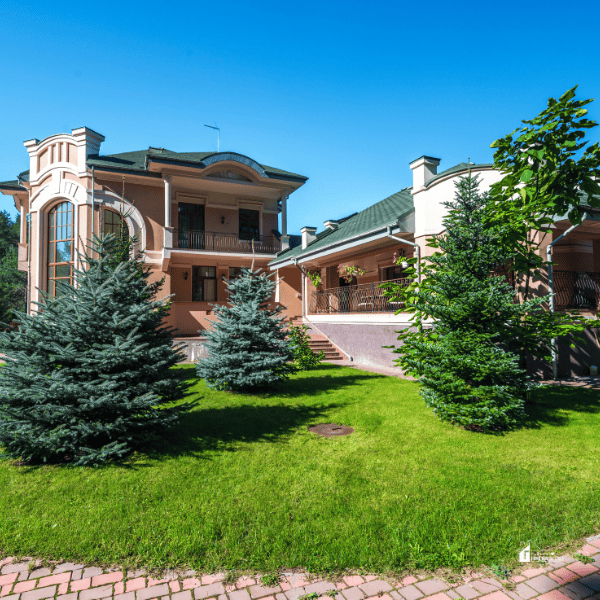
Suitable locations for planting maple trees
When planting a maple tree in front of your house, it's important to consider the tree's size at maturity and its growth habits. Make sure to plant it in a location with enough space for the tree to grow without causing any damage to buildings or underground pipes. Maple trees thrive in moist locations but can tolerate different soil conditions. Choose a location that provides adequate sunlight or shade based on the specific needs of the chosen maple variety.
By selecting the right type of maple tree and planting it in a suitable location, you can enhance your house's curb appeal and enjoy the beauty of these majestic trees for years to come.
Oak Trees
When it comes to choosing a tree to plant in front of your house, oak trees are an excellent option. Oak trees belong to the Quercus genus and are known for their majestic presence and longevity. There are various oak trees, each with unique characteristics and features.
Some popular types of oak trees include white oak, red oak, black oak, bur oak, and southern live oak. Each type has distinct leaf shapes, bark colors, and growth patterns. The white oak is known for its rounded lobes, while the red oak has sharply pointed lobes.
The black oak gets its name from its dark-colored bark, and the bur oak is favored for its resistance to cold weather. The southern live oak is a staple in the southern United States and boasts unique branches that almost touch the ground.
Oak tree characteristics and features
Oak trees are known for their large and rounded canopies, which provide ample shade. They have broad leaves that can be either deciduous or evergreen, depending on the species. Oak trees grow slowly but can reach towering heights and live for centuries. Their strong root systems make them resilient, even in harsh weather conditions.
Considerations for planting oak trees in the front yard
Before planting an oak tree in your front yard, consider the space available, as these trees can grow quite large. Ensure that the chosen species is suitable for your climate and soil conditions. Oaks thrive in full sun, so make sure they receive adequate sunlight throughout the day. Regular maintenance is also required to keep the tree healthy and prevent potential hazards.
Overall, planting an oak tree in front of your house can enhance your curb appeal, provide shade, and contribute to the natural beauty of your landscape. It's important to select the right type of oak tree based on your specific requirements and take proper care to ensure its long-term health and beauty.
Cherry Blossom Trees
When it comes to choosing a tree for the front yard, cherry blossom trees are an excellent choice. These elegant and enchanting trees are known for their beautiful blooms, adding grace and charm to any landscape.
Cherry blossom trees, also known as sakura trees, originate from Japan and are a symbol of renewal and the transient nature of life. They typically bloom in the spring, filling the air with their delicate fragrance and covering the branches with vibrant pink or white flowers.
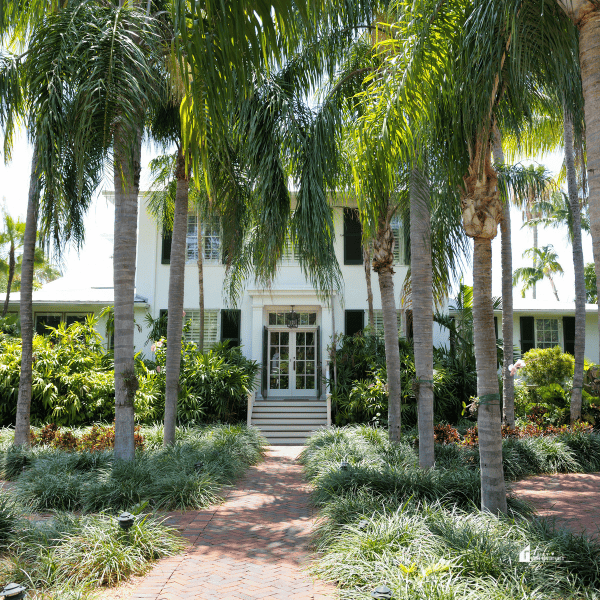
Cherry blossom tree characteristics and features
Cherry blossom trees can grow to be up to 30 feet tall and wide, making them a great option for front yards of all sizes. They prefer full sun but can tolerate some shade. The trees have a relatively short lifespan of around 15 to 25 years, although some varieties can live longer under optimal conditions.
These trees require well-drained acidic soil, so ensuring proper drainage in the planting area is important. Mulching around the base of the tree can help retain moisture without causing waterlogging.
Tips for planting cherry blossom trees in the front yard
To successfully plant a cherry blossom tree in your front yard, follow these tips:
- Choose a location with full sun or partial shade.
- Prepare the soil by ensuring proper drainage and acidity.
- Dig a hole that is large enough for the root ball and add organic matter to improve soil quality.
- Plant the tree at the same depth it was originally growing.
- Water the young tree regularly during its first two seasons to help it establish roots.
- Fertilize the tree once a year with a slow-release fertilizer designed for flowering trees.
- Prune the tree after blooming in the spring to shape it and remove any dead wood.
By following these tips and taking proper care of your cherry blossom tree, you can enjoy the beauty and elegance it brings to your front yard for years to come.
Dogwood Trees
If you're looking for the perfect tree to plant in front of your house, consider the beauty and elegance of dogwood trees. With their stunning blooms and attractive foliage, dogwoods make a statement and enhance the curb appeal of any home. Here's an overview of different dogwood tree types, their characteristics, and the ideal conditions for planting them.
Overview of different types of dogwood trees
Dogwood trees come in various species, each offering unique characteristics. The most popular is the Flowering Dogwood (Cornus florida), known for its stunning white or pink blooms in spring. Other types include the Kousa Dogwood (Cornus kousa) with its vibrant red berries and the Venus Dogwood (Cornus x ‘KN30-8') with its large, white flowers.
Dogwood tree characteristics and features
One of the main draws of dogwood trees is their beautiful flowers. They attract butterflies and birds, adding life to your front yard. Dogwoods also have attractive foliage, with leaves that turn vibrant shades of red, orange, or purple in the fall. Their branches provide structure and interest even when they're not in bloom.
Ideal conditions for planting dogwood trees
Dogwoods thrive in well-drained soil that is organically rich and slightly acidic. They prefer partial shade or filtered sunlight, making them ideal for planting in front of a house where they can be protected from direct afternoon sun. It's important to ensure that the soil is moist but well-drained, as dogwoods do not tolerate wet feet.
Choosing a dogwood tree for your front yard adds beauty, color, and character to your home. Just make sure to provide the right conditions for optimal growth and enjoy the stunning blooms year after year.
Magnolia Trees
When it comes to choosing a tree to plant in front of your house, magnolia trees can be an excellent choice. They offer your landscape beauty, fragrance, and a touch of elegance. Here is an overview of magnolia trees, their characteristics, and some best practices for planting them in the front yard.
Overview of magnolia trees
Magnolia trees belong to the Magnoliaceae family and are known for their large, showy flowers. There are many different species and varieties of magnolias, each with its own unique characteristics. Magnolias can be evergreen or deciduous and come in various colors, including white, pink, and yellow. They also differ in size, with some growing as tall as 80 feet and others staying around 20 feet.

Magnolia tree characteristics and features
Magnolia trees are loved for their beautiful flowers that often have a pleasant fragrance. Their glossy green leaves add texture and color to the landscape. Depending on the species, magnolias can bloom in spring or summer. Their growth rate varies from slow to moderate, making them ideal for long-term landscaping plans.
Best practices for planting magnolia trees in the front yard
To ensure the successful growth of magnolia trees in your front yard, consider the following best practices:
- Choose the right species: Select a magnolia species suitable for your climate and matching your desired height and flower color.
- Site selection: Find a location in your front yard that offers full to partial sun exposure and well-drained soil. Magnolias generally prefer slightly acidic soil.
- Planting: Dig a hole that is slightly wider and shallower than the root ball of the tree. Backfill the hole with soil mixed with compost or organic matter to promote healthy root growth.
- Watering and maintenance: Provide regular watering during the first few years of growth to establish the tree. Prune as needed to maintain shape and remove dead or damaged branches.
By selecting and planting a magnolia tree in your front yard, you can enhance the beauty of your landscape and create a welcoming atmosphere for visitors and passersby.
Pine Trees
When it comes to choosing a tree to plant in front of your house, pine trees can be a great option. Not only are they beautiful and elegant, but they also offer a variety of benefits for your landscape. Here is an overview of different pine tree types, their characteristics and features, and factors to consider when planting them in the front yard.
Overview of different types of pine trees
There are many different types of pine trees to choose from, each with its own unique characteristics. Some popular options include:
- Japanese White Pine: This tree produces eye-catching clusters of dark green needles and can reach heights of up to 80 feet.
- Swiss Mountain Pine: Known for its straight and erect growth habit, this tree can reach up to 65 feet in height.
- Jeffrey Pine: A compact version called ‘Joppi' is well-suited for sunny rock gardens and reaches a maximum height of 6 feet.
- Scots Pine: With a lifespan of up to 700 years, this tree can reach heights up to 145 feet and has blue-green needle leaves.
Pine tree characteristics and features
Pine trees are evergreen, meaning they retain their foliage all year round. They are also naturally resistant to disease and insect infestations. Pine needles vary in color from dark green to forest green and may have a grayish tinge. Some pine trees produce cones that add visual interest to the landscape.
Factors to consider when planting pine trees in the front yard
Before planting a pine tree in your front yard, consider the following factors:
- Growth size: Make sure the tree has enough space to grow without obstructing your house or other structures in the front yard.
- Sunlight requirements: Most pine trees prefer sunny locations but can tolerate partial shade.
- Soil and drainage: Pine trees thrive in well-drained soil, so ensure your front yard has suitable soil conditions.
- Climate compatibility: Check if your chosen pine tree is compatible with your zone and climate.
By carefully considering these factors and selecting the right type of pine tree, you can enhance the beauty of your front yard and create a visually appealing landscape.



